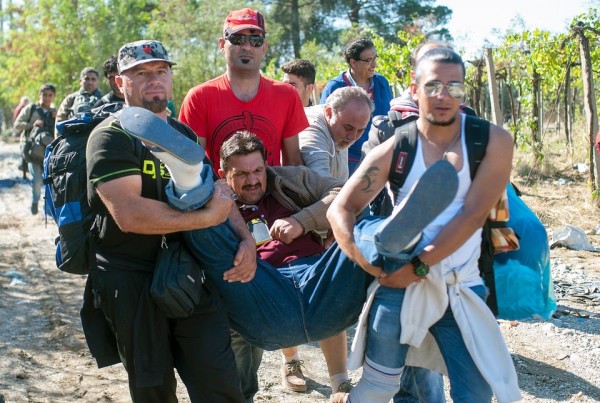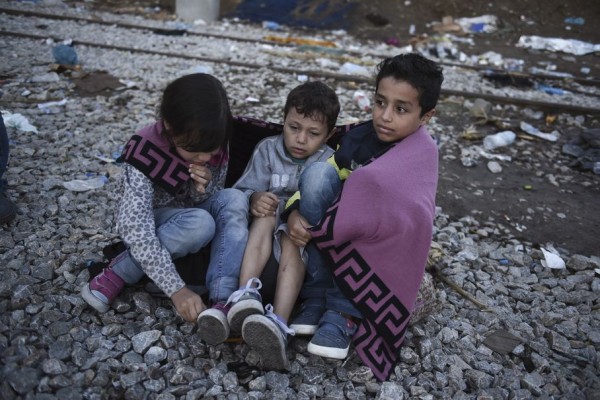
The people streaming into Europe are the faces of a world on the move, more so now than at any other time in recent history. Last year, the United Nations announced that the number of displaced people worldwide had surpassed 50 million for the first time since the end of World War II. It’s now nearly 60 million.
Yet migration is also a story as old as man — and in this case, woman and child. Here is a snapshot of today’s migration to Europe in the context of history and geography.
A WORLD AT WAR
Today’s migration, a wave that has grown since the Arab Spring in 2011, is perhaps most often compared with the flight of refugees after World War II. It’s impossible to calculate accurately, mainly because we now have much better data and tracking systems than even a decade ago. But the U.N. reports that the number of displaced people during World War II exceeded 50 million — which is less than now, but at a time when the world’s population was smaller.
However, it’s not just a question of numbers. The post-war migrants were largely considered assets and welcomed by much of the public — in stark contrast to the suspicion most migrants flowing across Europe’s borders are greeted with today.
Anthony Messina, author of a book on migration during the war, says that’s in part because northern Europe had severe shortages of labor. But it’s also because the post-war migrants were largely white and European, unlike those now from Africa and the Middle East.
“After World War II, there was an acceptance for taking in displaced populations, there was a finding of solutions,” says Susanne Schmeidl, an expert in international migration with the University of New South Wales in Australia. “And now we have a couple of massive displacements with an increasing attitude of, ‘Go back to where you came from.’ And that I find is the scary part — how to negotiate that.”
The warm welcome in many cases did not extend to Jewish refugees, many of whom left Europe altogether for the United States, Israel, Canada and Australia, among other countries.
THAT SENSE OF DEJA VU

While World War II’s mass migration was linked to, well, a massive world war, today’s migration is largely driven by a variety of drawn-out internal conflicts. That means people are being displaced not once, but over and over again.
In the past five years, at least 15 conflicts have erupted or reignited, and the U.N. says more than a quarter of Palestinian refugees alone have been displaced a second (or third, or fourth) time by the Syrian war. Others are displaced more than once for different reasons, including natural disasters tied to climate change or the difficulty of making ends meet in a new country.
After Wajih al-Zouhairy finished high school in Damascus in 2013, he fled to avoid being forced into the army. At first he stayed close, choosing, like nearly 2 million other Syrians, to seek refuge in neighboring Turkey. He worked 16-hour days selling cheese and eggs in an Istanbul market, but still found himself unable to put away enough money to start university studies. So this summer, he pulled up roots again, and paid smugglers to take him by boat to the Greek island of Kos. The 22-year-old eventually ended up in Berlin, where he was waiting in temporary housing, among swarms of migrants.
“It’s very bad in Syria, we have no systems,” he said in English. “In Syria, we think Germany has the best systems, but how it looks here is like Syria!”
THE FLOATING POPULATION
The focus now is on migrants who leave for other countries. However, more than half of the internally displaced people in the world are on the move within their own countries, according to the U.N.
One of the largest mass movements in the world is within China itself, which is home — and in many ways not home — to 253 million internal migrants. These are rural Chinese who have moved to cities, attracted by the increased demand for cheap labor and pushed out by development encroaching on rural lands. These internal migrants are generally poor, transitory and not entitled to the same benefits as city dwellers, which has led to them being dubbed as “liudong renkou” — or “floating population.”
THE BOAT TO FREEDOM
The images of desperate migrants in rickety boats have become all too common, but it was the Vietnam War that provided the first real opportunity for the public to see displaced people on their TV screens. That led to a huge boom in humanitarianism in the West and a welcoming attitude toward people fleeing Vietnam by boat, says Tim Hatton, author of a book on global migration and the world economy.
After the fall of Saigon in 1975, the U.S. accepted more than a million refugees from Vietnam, Cambodia and Laos. Europe took them in, too, on a smaller scale: France alone accepted more than 128,000 refugees. In an emotional response, French philosopher Jean-Paul Sartre unusually joined with a committee of the well-known of all political stripes, including crooner and actor Yves Montand, in the name of humanity. “I am taking the side of man,” Sartre said at the time. “What counts here is that this is about … men in danger of death.”
During the Cold War, refugees were particularly welcomed by the U.S. because they were fleeing from communism, which was seen as a politically important stance to take. But by the 1980s, the goodwill began to dwindle, and immigration policies tightened in particular after the terrorist attacks of Sept. 11, 2001.
ROAD TO DEATH
The defining images of Europe’s migrant crisis have been of dead children washed up on beaches, corpses floating in the sea and rows of coffins lining an airport hangar. Statistics vary, but figures from the International Organization for Migration and the U.N. show that around 8,880 migrants have died on the Mediterranean Sea route, possibly the most dangerous in the world, or on land routes within Europe since 2011. Experts warn that many migrants simply vanish en route, and that for every dead body found, there are at least two others never recorded.
The lack of data limits any comparison of death rates to the past. But one reason for the large number of deaths could be that some migration routes are new and untested, and therefore very dangerous, Messina says. Another could be the role and increasing organization of people-smugglers who care about profit rather than migrant safety. Although people smuggling has been around for a long time, migrants in past decades more often made their way to Europe on their own, in small groups and as families.
A BREAKDOWN IN ASYLUM
After the oil crisis of 1973, a number of legal routes into Europe were closed, and more people began trying to arrive illegally. The same thing happened following the global financial crisis. A breakdown in Europe’s asylum system exacerbated the problem, says Khalid Koser, a Geneva-based migration expert with the Lowy Institute for International Policy.
Economic migrants, asylum seekers, refugees and victims of trafficking increasingly make use of the same routes and means of transportation to get overseas, and it can be difficult to distinguish between them.
“In the ’70s or ’80s, you could come to Europe as a migrant or a refugee. Now, the only way is to pretend you’re an asylum seeker,” Koser says. “So you have large numbers of people whose only way in is to apply for asylum even though they’re not asylum seekers.”
NOT CHILD’S PLAY
More than half of the world’s refugees are now children, the U.N. found last year.
It’s difficult to accurately count these children, and experts say the only real gauge is to look at those who apply for asylum — which is just a tiny fraction of them. Between 2011 and 2014, about 60,000 unaccompanied children crossed into Europe, according to Eurostat, the European Union’s statistics agency. Over the same period, around 150,000 unaccompanied children were apprehended at the southwest borders of the United States, though that’s an uneven comparison with Europe since only a small fraction of the U.S.-bound migrants applied for asylum. U.S. federal officials say around 65 percent of unaccompanied children who applied for asylum in 2014 got it.
Associated Press / My Way
Leave a Reply
You must be logged in to post a comment.